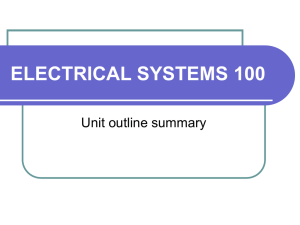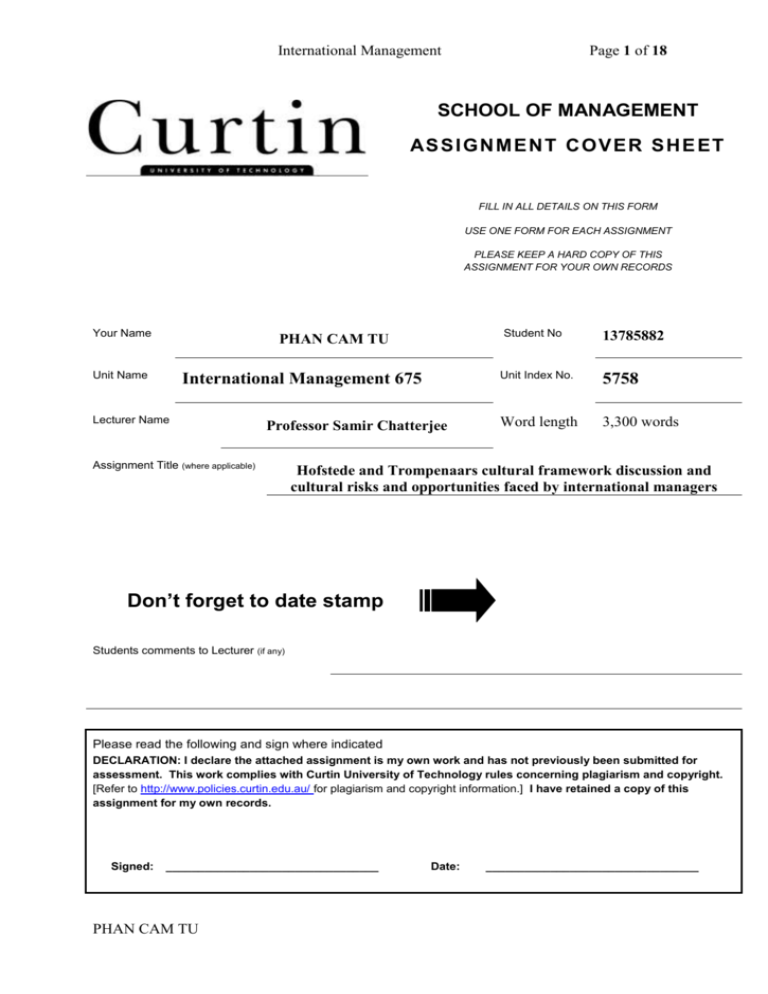
International Management
Page 1 of 18
SCHOOL OF MANAGEMENT
AS SI G N M EN T C O VER SH E ET
FILL IN ALL DETAILS ON THIS FORM
USE ONE FORM FOR EACH ASSIGNMENT
PLEASE KEEP A HARD COPY OF THIS
ASSIGNMENT FOR YOUR OWN RECORDS
Your Name
Student No
PHAN CAM TU
Unit Name
International Management 675
Lecturer Name
Professor Samir Chatterjee
Assignment Title (where applicable)
13785882
Unit Index No.
5758
Word length
3,300 words
Hofstede and Trompenaars cultural framework discussion and
cultural risks and opportunities faced by international managers
Don’t forget to date stamp
Students comments to Lecturer (if any)
Please read the following and sign where indicated
DECLARATION: I declare the attached assignment is my own work and has not previously been submitted for
assessment. This work complies with Curtin University of Technology rules concerning plagiarism and copyright.
[Refer to http://www.policies.curtin.edu.au/ for plagiarism and copyright information.] I have retained a copy of this
assignment for my own records.
Signed:
_________________________________
PHAN CAM TU
Date:
_________________________________
International Management
Page 2 of 18
THIS SECTION IS TO BE COMPLETED BY LECTURER: COMMENTS TO STUDENT
Recorded Mark
PHAN CAM TU
Lecturer
Date
International Management
Page 3 of 18
Contents
INTRODUCTION ..................................................................................................................... 4
LITERATURE REVIEW .......................................................................................................... 4
HOSTEDE AND HIS FIVE DIMENSIONS ......................................................................... 4
TROMPENAARS AND HIS SEVEN DIMENSIONS ......................................................... 8
TWO MODELS IN COMPARISON AND CONTRAST ................................................... 10
OPPORTUNITIES AND RISKS FACED BY INTERNATIONAL MANAGERS ............... 11
CONCLUSION ........................................................................................................................ 13
REFERENCES ........................................................................................................................ 14
PHAN CAM TU
International Management
Page 4 of 18
INTRODUCTION
Whilst doing business in the global scale, unavoidably international managers ought
to face up with provoked unexpected issues involved in differences in cultures. Figuratively,
“culture is like the wind; you can feel it in your face” and deal with in daily jobs, but “you
cannot catch it in your palm!” (Ramachander 2006, 1). For this reason, the consciousness,
comprehension, sensibilities and knowledge related to diversified or diverse cultures are the
essential requirements and standards for them. Accordingly, the studies of Hofstede and
Trompenaars adhered to cultural frameworks have been supposed to be their lodestar and
guidelines. Based on that of researches, international managers deem to have a better
understanding of cultures vis-à-vis business contexts. From that, the generic picture of the
dilemma of opportunities and risks in association with these cultural differences gradually
fades in.
LITERATURE REVIEW
In this part, firstly the G. Hofstede model of the national culture in line with its
application in organizations and management will be discussed. Secondly, the “seven
dimensions” culture model created by F. Trompenaars is going to be disserted. Lastly, the
comparison and contrast between that of two models is about to be presented thoroughly.
HOSTEDE AND HIS FIVE DIMENSIONS
With respect to Geert Hofstede, he is a Dutch scientist as well as a business scholar,
and his research was commenced in the early 1980s and continued over the next decades
(Cullen and Parboteeah 2008, 54-66). His quantitative-approached study was conducted in 66
countries and its results derived from 117,000 subjects (namely 1,600 employees) who
worked in IBM worldwide (Blocker and Flint 2007, 249-259). His work has been remained
its original values so far to the international business due to the fact that he did his research of
cultural differences hinged on national values and beliefs towards business work, rather than
isolated, desultory, large or general. In principle, Hofstede concluded that there were five
values or dimensions determining national cultures including power distance, uncertainty
avoidance, individualism, masculinity and long-term orientation.
PHAN CAM TU
International Management
Page 5 of 18
According to his statements, power distance (PD) dimension was defined as
“expectation regarding equality among people”. In overview, factors consisting of economic,
social, and political, organizational and personal decided the PD (Borden 1991, 33:6). For
instance, the classes in Indian society embrace the Brahmins or priests, the Vaishyas or
business people, the Kshatriyas or ruler and warriors, and the Shudras or common laborers
(Social Classes And Castes In Ancient India). These caste discriminations lead to power,
authority, privilege and respect dissimilarities. That is, the higher strata we have, the more
powerful we are. In the same trend, the PD in business aspect dealt with the levels of
acceptable inequality shaped by relationships between superiors (bosses, leaders) and
subordinates (MacNab 2007, 1). This means that how much inequality in decision-making
process, prerogatives and power is supposed to be endured or accepted due to varied
positions in organizations (Scholtens and Dam 2007, 273-284). More specifically, the higher
position managers have centralized power and could decide by themselves any important
issues without recourse to inferiors’ involvement and ideas. This dimension was fallen into
two sub-categories consisting of high PD and low PD.
In high PD, its hierarchy was a tall pyramid with the centralized power towards
superiors. The theory X leadership which assumed that people dislike working should be
implemented herein because workers need forces from superiors through the supervision and
reward (carrot) and punishment (stick) systems. On the contrary, in low PD, the span of
power between management and workers was narrow and its hierarchy system was flat,
organic and decentralized or delegated. In other words, they work under the supportive,
participative and collaborative umbrella. Workers are presumed to be eager to work and
autonomous, and they do not need much control, instruction or conduct.
Regarding the uncertainty avoidance (UA) dimension, it was defined as “the extent
to which people tolerate uncertainty and ambiguity” (Moulettes 2007, 443-455). This was
used to measure the reaction of people when they confront with the uncertainties, dangers,
differences and uncommon events. It was classified into two sub-kinds including high UA
and low UA.
In high UA culture, the seniority and experience were highly appreciated. Employees’
loyalty was exchanged for the entire or whole life working insurance. People in companies on
the surface were prone to working in harmony and avoided competition or diminished
conflicts as least as possible. Any problem, which once was existed, especially could
PHAN CAM TU
International Management
Page 6 of 18
influence negatively on the face, image and renown of a company, should be resolved outside
the office or privately, rather than brought into the light of the public. People in this culture
sought for the stability in life and work and were afraid of risk-taking and rule-breaking. For
that reason, from the perspective of people involved, in practice the company with that kind
of people is a block or a cement wall of unified and obedient people and so difficult to
approach and understand. In contrast, people in low UA considered that the competition was
necessary or vital for the development. In addition, leaders or managers were supposed to be
more flexible and gave more choices to subordinates.
With respect to the Individualism (ID) or High Individualism and Collectivism (CL)
or Low Individualism, in the light of values, norms and beliefs in connection with the
relationship between individual and group, Hofstede reached to conclusions that in ID the ego
was a must and in CL the group was the essence. That is to say, the individualistic culture
focused on or concerned about “consequences of one’s behavior or one’s own needs, interests
and goods (Koch and Koch 2007, 207-225). In other words, each one will take responsibility
of what he or she has done and at the same time enjoy his or her performance and outcomes
to himself or herself. Briefly, people followed this dimension had a tendency to be selfinterested and independent. From the point of view of superiors, the extrinsic rewards such as
money and promotion seemed to work out or being more effective. As opposed to this, the
collectivism paid attention to group work or community. That is, despite rank-and-file
workers or top managers, all had to stick and lean on together. Regardless of consequences or
achievements, they were the work of the team or group. This led to the fact that the
egalitarian trend has spread in organizations. In some cases, due to equal shares of the pie at
any price in the end, the contribution of each person in advance at times has not been even,
equal and fair. One striking point being worthy to take note is that the nepotism or kinship
has been commonplace in this sort of culture. The term nepotism or familism was defined as
the family or relative hiring or employment in companies (Hickson & Pugh 2001, 28).
Simply, people reckon that it is trustworthy, loyal and reliable in the case of working with the
same blood. Moreover, this aims to the guan xi or network establishment as well. As for guan
xi, it is a relationship or connection set up in order to have a favor or assistance when needed
in the future (Pearson and Chatterjee 2003, 694-707). Two bounds mixed together in the
collectivist companies and society. On the one side, there are complicated relationships
within a company; on the other sides, there are complex strings between that of company and
satellites or other corporates.
PHAN CAM TU
International Management
Page 7 of 18
Concerning with the Masculinity or High Masculinity and Femininity or Low
Masculinity dimension, it connected with the traditional gender roles generally accepted by
the society. This means that the Masculine culture had “assertive” or aggressive, ego focused
and objective characteristics. Managers had an inclination towards centralized power in the
decision making or the tall hierarchy or top-down management system came to exist. People
belonging in this culture in organizations emphasized on the needs for the advancement,
improvements, challenges, recognition and earnings. In other words, they did not satisfy with
the present accomplishments; instead, they the whole time actively tried to go forward, in
terms of in the quest of new knowledge, technologies, skills and innovations. Their loadstar is
“live to work”. By comparison, the attributes of the feminine culture are nurturant, social and
subjective. That is, the management and decision-making process had less centrality or voices
of both managerial levels and workers were listened to more equally. People preferred the
cooperation, employment security, friendly working environment and current condition
satisfaction. The “resistance to change” reaction will be occurred if employees were
compelled to change suddenly.
Lastly, as for the Long-term Orientation (LTO) and Short-term Orientation (STO)
dimension, it is consistent with the relationship time maintenance. Namely, in LTO culture,
workers pertained to train and socialization process corresponding to culture and skills
required by the company step-by-step. The employment was for long or entire life and the
harmonious relationships within an organization were in favor in lieu of profits, competition
and duels. Contrary to this, along with the STO culture, staffs were supposed to be equipped
with necessary skills and available experiences in advance or before the recruitment. The
profits, values or prices of shares and benefits for stakeholders were the most reliable
measurements for the organization’s growth or development. The employment based on term
or contemporary contracts or agreements among employee, employer and union parties, and
could be ended prior to the expiry date. The loose relationships in companies relied on short
run base or foundation and incentives to staffs, particularly pays and promotions, have been
taken use of commonly.
In brief, Hofstede based on the national cultures built up his model. That of five
dimensions laid the foundation to have the in-depth understanding about cultures and as
always, paved the way for the later-on criticism and enhancement.
PHAN CAM TU
International Management
Page 8 of 18
TROMPENAARS AND HIS SEVEN DIMENSIONS
By investigating the variations in cultural dimensions, initial studies of Hofstede and
Hall (1996) shed a light on cultural differences. From these, international managers had a
better understanding of the cross-cultural communication to adapt their strategies and apply
in their business, especially in marketing, advertising, negotiation and HR management fields.
Nevertheless, in the meanwhile they also have been challenged or criticized for their limited
explanation, validity, generalizability and somewhat obsolescence though (Jun and Lee 2007,
474-491). Due to these reasons, Fons Trompenaars and Hamden-Turner in 1998, after ten
years worked with 15,000 managers from 28 countries (Deresky 2008, 103), they together
created the seven new cultural dimensions embracing the universalism vs. particularism,
individualism vs. communitarianism or collectivism, neutral vs. emotional or affective,
specific vs. diffuse, achievement vs. ascription, orientation in time or past, present, future, or
a mixture, and attitudes towards the environment, internal vs. external control or “control of”
vs. “accommodation with” nature.
Referring to the universalism vs. particularism dimension, its definitions adhere to
either rule or relationship application. That is, conferring the universalism, strict and
consistent rules, regulations or principles were supposed to be obeyed at any price and in any
occasion, in spite of the fact that who they are, where they come from and which position
people hold (Gopalan and Thomson 2003, 313). This implies that whilst doing business in
this culture, the contract or agreement signings or written documents in association with laws
are the ultimate mottos or precepts. As compared to this, the particularism leaned on the
selection and preference for treatments. That is, rules are rules; nonetheless, their
interpretations are different and there are gaps between rules and practice. For this reason, it
is necessary to be flexible. People created rules, not reverse. Rules are likely so rigid and
fixed, and they could not catch up with the stormy-speed development of the society and
technology, as always. Hence, people could change or modify them later; yet meanwhile the
sympathy and flexibility should be taken into consideration, instead. Therefore, parallel with
a given situation, in accordance with the law range permission, managers will make up their
mind and make suitable decisions.
In respect of the individualism vs. collectivism dimension, it was compatible with the
individual or group belonging perspective. The individualist society more focused on the
training to be independent and taking responsibility of what one has done. In the same vein,
PHAN CAM TU
International Management
Page 9 of 18
in organizations people emphasized on their ego, notably “me” and “I”. Furthermore, they
directed to be individual in achievement-enjoying, responsibility-taking and decision-making.
On the contrary, in the collectivist society, people defaulted to be a member or part of a group,
family, organization and community. Along with this, in companies, they centered heavily on
“we” in the sharing of accomplishment, duty and determination. From their viewpoints, a
person is unable to complete or finish a big job; instead, together they could move the highest
mountains and fill up the deepest oceans. Hence, wherever they go, they have a tendency to
stick together and form groups to be stronger and more influential.
Concerning with the neutral and affective dimension, the author discussed the
expressing emotion acceptability. That is, from the angle of the neutral orientation, personal
thoughts and feelings should be uncovered or hidden and controlled critically, deliberately
and carefully. Thus, people working under one roof of a company involved in this culture are
prone to be objective and straightforward. On the other hand, the affective culture tended to
emotional outburst, outbreak and revelation. This means that in that society, a variety of
emotions and expressions such as angry, sadness and happiness are expected to be exhibited
and accepted in any situation. People would be accused of wearing their masks unless they
expose their opinions directly and honestly. In some cases, personal emotions could be
brought into the offices. For that matter, inasmuch as the tolerance of subordinates for
superiors’ emotional pressures are so popular in practice. That is, the working environment
for the whole day is either good or bad depending much on the face expressions of the
managers. In addition, the reactions, in terms of agreement and satisfaction or disapproval
and unpleasantness, are easy to be recognized and acknowledged. Briefly, as for this culture,
in principle people at times followed the agenda; in other words, their emotions would follow
a cycle (from up time to down time and vice versa) and by observations on purpose, it would
be not so difficult to predict.
Regarding the specific and diffuse dimension, it explored the extent to which or how
deep the individual life involved in work relationships. In the specific culture, the business
and private life were separated clearly from each other. The further or deeper communication
and interactions were limited as least as possible (Tse, Tiong and Kangaslahti 2004, 382).
The relationships concentrated on business exchanges and specific purposes only. Conversely,
the diffuse culture mixed between business and relationships together. It is preferable to get to
know each other in advance, business negotiations could wait then.
PHAN CAM TU
International Management
Page 10 of 18
As for the achievement and ascription dimension, it investigated the granting or
giving of the status. The achievement culture addressed that people earned their status
through the performance and accomplishment by their own. This means that the capability,
competence, attainment, productivity and effectiveness per se are used to evaluate and
promote. Contrariwise, the ascription culture pointed out that loyalty, seniority, experience
and educational background were decisive elements for the respect and promotion.
Conferring the time horizon, it investigated the past, present and future concerns.
That is, to the past and present oriented organizations and society, what existing today are the
continuity and inheritance from the past time. For that reason, any change should be taken
into consideration carefully; in other words, the stability may be preferred. Inversely, from
the aspect of the future orientation, the advancements were derived from the competition.
Furthermore, roles of individuals towards the future changing and the hard-working spirit
were highly appreciated.
Lastly, the internal versus external control examined the fate control belief. The
internal culture supposed that the lot is within one’s hand or under control. Managers deemed
to be proactive, based on specifically planned strategies, and counted on concrete numbers
and data. Conversely, the external or nature dominance oriented people reckoned and upheld
that in some cases, some things could not be changed or successful owing to the destiny or
the hand of God. Therefore, the compromise and harmony were much more paid attention to.
TWO MODELS IN COMPARISON AND CONTRAST
In a general picture, the culture was defined as the shared values, norms, goals,
understandings and assumptions among members in a society from generations to other
generations. As a result, it could not be changed in a blink of an eye and among cultures in
the world; there are the diversification, divergence and differences (Mayo 2003, 36). Hence,
as international managers, the awareness and knowledge of these play pivotal roles. Two
models, as scrutinized earlier, are helpful to them, in terms of advertising and marketing
communication, HRM and negotiation across borders. The study of Trompenaars was
considered as the succeeding research of Hofstede, yet also threw new light on cross cultural
factors. The similarities between two authors are that firstly they created and developed the
typologies and then they suggested dimensions inherent in those typologies to measure that of
PHAN CAM TU
International Management
Page 11 of 18
culture (Jacob 2005, 514). Based on that, they proposed suitable and feasible management
methodologies and strategies. For instance, they pointed out the typical characteristics, such
as foci on “me/I”, individual achievement and decision making, for the individualism
dimension. Later, they suggested the incentives by money and promotion as the most
effective methods. Interestingly, these two Dutchmen had the same concern on the
Individualism hand in hand with Collectivism (Hofstede) and Communitarianism
(Trompenaars).
Learning from the critiques of the Hofstede’s work, such as its narrowness in selected
samples of well-educated middle class white men in the same company sharing the identical
and similar occupations (Moulettes 2007, 443-455) or the lack of women’s voices, its
ignorance of anthropologies (history, educational process, languages and colors) (Heijes 2007,
93) and its bipolar characteristics (having features in both dimensions), Trompenaars’s study
has some amelioration and advances. For example, he proved that the education also a
decisive element in determining the status and positions in companies (achievement vs.
ascription dimension). Furthermore, he discussed more the affecting relationships and he
cared much about the subject choices, in terms of a wider range of jobs and classes.
OPPORTUNITIES AND RISKS FACED BY INTERNATIONAL
MANAGERS
Unavoidably, day to day the globalization process influenced the whole world and the
culture convergence trend spreads widely (Hill 2006, 7-8). That is, a variety of standardizedquality products and services such as airplanes, IT and pharmaceutics have been accepted
around the globe. The international managers have not much worried about the differences in
cultures and the global strategies in which the same products and services could serve for the
whole world are feasible and economic. However, except for those, from the aspect of MNC
managers, the cultural differences must be studied and taken into consideration carefully
before launching their products and services. From this, they lead to the risks and
opportunities as well. That is, if the managers could catch up with and make use of the
differences, they would be the great opportunities for themselves and for the corporate
growth and vice versa. The marketing and advertising in the internet through websites are
good examples. The standardization helps companies reduce costs surely. However,
localization and customization, namely their layouts, colors, formats, languages, values, are
PHAN CAM TU
International Management
Page 12 of 18
the best ways to approach and reach to customers. In the collectivist culture where family and
community values appreciated, the happily extended family pictures and norms with three
generations living together certainly could catch the eyes of Eastern visitors. In short, the two
researches with dimensions consistent with cultural differences, as mentioned above, are the
helpful and useful hints for international managers to decide to which degree or extent their
products and services glocalized (globalization plus localization).
In negotiation, studying the cultures of partners beforehand is one of the important
and decisive factors for the success. To Asia negotiators, the “non-task sounding” or time “to
get to know you” prior to the formal negotiation are predominant and striking. They want to
ensure that they sign contract with someone they know as much as possible. The current
contract is not so pivotal; instead, the long-run relationship is what they aim to. In the case
they trust the partners as such, the following contracts would be processed at ease and oral
deals would be utilized. As opposed to Western countries, the gift-giving, especially small
presents produced in the home country, is regarded as the etiquette prevalently in Eastern
ones. Last but not least, the guan xi has been built up and made use of popularly in Asia
countries. To sum up, negotiators would not reach to any compromise and have common
voices if they have not examine and respect the cultures of the other parties. Learning them
carefully will lead to the successful negotiations.
In HR management, in the absence of cultural difference sensitivity and knowledge,
international managers may encounter many difficulties, misunderstanding, isolation,
discrimination, disobedience and even disappointedly expatriate failures. For instance, all of
MNEs doing business in Asia are expected to create the high context with formal working
conditions, clothing and styles. It would be a big shock for Eastern cultural employees if their
managers appeared with jeans and T-shirt. In addition, the “carrot”, incentives or rewards by
the money and promotion are not their first choice. The job stability and sustainably longterm relationships are their supreme concerns. Finally, they show propensities for
confrontation avoidance, relationship and job mixture and past commemoration. They are
humble, reluctant to decide, introvert and patient. For instance, the 30-year friendships are
prevailing in Asia countries. The face-to-face argument with superiors mostly did not happen.
Once international managers are aware of these points, the synergy of people will be gathered
productively, effectively and efficiently.
PHAN CAM TU
International Management
Page 13 of 18
CONCLUSION
To sum up, the nationally cultural differences created and developed by Hofstede and
Trompanaars are so useful and helpful to international managers. Based on these dimensions,
they could make their critical choices in the marketing and advertising strategies, negotiation
process and HR management. By doing those, the risks of failure are decreased as least as
possible, and the opportunities for success are boosted as much as possible.
PHAN CAM TU
International Management
Page 14 of 18
REFERENCES
Blocker, C.P. and Flint, D.J. 2007. Customer Value In Cross-Cultural Business Relationship.
Journal Of Business & Industrial Marketing 22 (4): 249-259.
http://proquest.umi.com.dbgw.lis.curtin.edu.au/pqdweb?index=32&did=1366134641&SrchM
ode=1&sid=2&Fmt=6&VInst=PROD&VType=PQD&RQT=309&VName=PQD&TS=1219
416336&clientId=22212(accessed September 06, 2008)
Borden, G.A. 1991. Cultural Orientation: An Approach To Understanding Intercultural
Communication. New Jersey: Prentice Hall.
Cullen, J.B. and Parboteeah, K.P. 2008. Multinational Management: A Strategic Approach 4e.
United States of America: Thomson South-West.
Deresky, H. 2008. International Management: Managing Across Borders And Cultures Text
And Cases. United States Of America: Pearson Prentice Hall.
Gopalan, S. and Thomson, N. 2003. National Cultures, Information Search Behaviors And
The Attribution Process Of Cross-National Managers: A Conceptual Framework. Teaching
Business Ethics 7 (3): 313.
http://proquest.umi.com.dbgw.lis.curtin.edu.au/pqdweb?index=17&did=424415731&SrchMo
de=1&sid=3&Fmt=10&VInst=PROD&VType=PQD&RQT=309&VName=PQD&TS=1219
584080&clientId=22212(accessed September 03, 2008)
PHAN CAM TU
International Management
Page 15 of 18
Heijes. C. 2007. The Broad Dimensions Of Doing Business Abroad. The Business Review 8
(1): 93.
http://proquest.umi.com.dbgw.lis.curtin.edu.au/pqdweb?index=29&did=1292526331&SrchM
ode=1&sid=2&Fmt=6&VInst=PROD&VType=PQD&RQT=309&VName=PQD&TS=1219
415656&clientId=22212(accessed September 05, 2008)
Hickson, D.J. & Pugh, D.S. 2001. Management Worldwide: Distinctive Styles Amid
Globalization. England: Penguin Books Ltd.
Hill, C. W. L. 2006. Global Business Today. New York: McGrain Hill Irwin.
Jacob, N. 2005. Cross – Cultural Investigations: Emerging Concepts. Journal Of
Organizational Change Management 18 (5): 514.
http://proquest.umi.com.dbgw.lis.curtin.edu.au/pqdweb?index=10&did=918079091&SrchMo
de=1&sid=3&Fmt=6&VInst=PROD&VType=PQD&RQT=309&VName=PQD&TS=12195
84080&clientId=22212(accessed September 05, 2008)
Jun, J.W. and Lee, H.S. 2007. Cultural Differences In Brand Designs And Tagline Appeals.
International Marketing Review 24 (4): 474-491.
http://proquest.umi.com.dbgw.lis.curtin.edu.au/pqdweb?index=1&did=1363412521&SrchMo
de=2&sid=3&Fmt=6&VInst=PROD&VType=PQD&RQT=309&VName=PQD&TS=12195
83070&clientId=22212(accessed September 03, 2008)
PHAN CAM TU
International Management
Page 16 of 18
Koch, B.J and Koch, P.T. 2007. Collectivism, Individualism, And Outgroup Cooperation In
A Segmented China. Asia Pacific J Manage 24: 207-225.
http://proquest.umi.com.dbgw.lis.curtin.edu.au/pqdweb?index=33&did=1250827761&SrchM
ode=1&sid=2&Fmt=6&VInst=PROD&VType=PQD&RQT=309&VName=PQD&TS=1219
416336&clientId=22212(accessed September 06, 2008)
MacNab, B.R. 2007. Culture Typing Versus Sample Specific Accuracy: An Examination Of
Uncertainty Avoidance, Power Distance, And Individualism For Business Professionals In
The U.S. And Canada. Multinational Business Review 15 (3): 1.
http://proquest.umi.com.dbgw.lis.curtin.edu.au/pqdweb?index=16&did=1498453601&SrchM
ode=1&sid=2&Fmt=6&VInst=PROD&VType=PQD&RQT=309&VName=PQD&TS=1219
414639&clientId=22212(accessed September 06, 2008)
Mayo, A. 2003. Culture: The Mother Of All Hurdles. Training Journal: 36.
http://proquest.umi.com.dbgw.lis.curtin.edu.au/pqdweb?index=19&did=335810221&SrchMo
de=1&sid=3&Fmt=6&VInst=PROD&VType=PQD&RQT=309&VName=PQD&TS=12195
84080&clientId=22212(accessed September 03, 2008)
Moulettes, A. 2007. The Absence Of Women’s Voices In Hofstede’s Cultural Consequences:
A Postcolonial Reading. Women In Management Review 22 (6): 443-455.
http://proquest.umi.com.dbgw.lis.curtin.edu.au/pqdweb?index=19&did=1323739861&SrchM
ode=1&sid=2&Fmt=6&VInst=PROD&VType=PQD&RQT=309&VName=PQD&TS=1219
414639&clientId=22212(accessed September 05, 2008)
PHAN CAM TU
International Management
Page 17 of 18
Moulettes, A. 2007. The Absence Of Women’s Voices In Hofstede’s Cultural Consequences:
A Postcolonial Reading. Women In Management Review 22 (6): 443-455.
http://proquest.umi.com.dbgw.lis.curtin.edu.au/pqdweb?index=19&did=1323739861&SrchM
ode=1&sid=2&Fmt=6&VInst=PROD&VType=PQD&RQT=309&VName=PQD&TS=1219
414639&clientId=22212(accessed September 06, 2008)
Pearson, C.A.L. and Chatterjee, S.R. 2003. Managerial Work Roles In Asia: An Empirical
Study of Mintzberg’s Role Formulation In Four Asian Countries. The Journal of
Management Development 22 (7/8): 694-707.
Ramachander, S. 2006. National Cultures: Hofstede’s Research. Businessline: 1.
http://proquest.umi.com.dbgw.lis.curtin.edu.au/pqdweb?index=56&did=1178047451&SrchM
ode=1&sid=2&Fmt=3&VInst=PROD&VType=PQD&RQT=309&VName=PQD&TS=1219
417920&clientId=22212(accessed September 03, 2008)
Scholtens, B. and Dam, L. 2007. Cultural Values And International Differences In Business
Ethics. Journal Of Business Ethics 75: 273-284.
http://proquest.umi.com.dbgw.lis.curtin.edu.au/pqdweb?index=14&did=1339472611&SrchM
ode=1&sid=2&Fmt=6&VInst=PROD&VType=PQD&RQT=309&VName=PQD&TS=1219
414639&clientId=22212(accessed September 03, 2008)
Social Classes And Castes In Ancient India.
http://www.sfusd.edu/schwww/sch618/India/Class_Caste.html(accessed September 06, 2008)
PHAN CAM TU
International Management
Page 18 of 18
Tse, T. Tiong, J. and Kangaslahti, V. 2004. The Effect Of Cultural Norms On The Uptake Of
Information And Communication Technologies In Europe: A Conceptual Analysis.
International Journal Of Management 21 (3): 382.
http://proquest.umi.com.dbgw.lis.curtin.edu.au/pqdweb?index=15&did=784446601&SrchMo
de=1&sid=3&Fmt=6&VInst=PROD&VType=PQD&RQT=309&VName=PQD&TS=12195
84080&clientId=22212(accessed September 03, 2008)
PHAN CAM TU


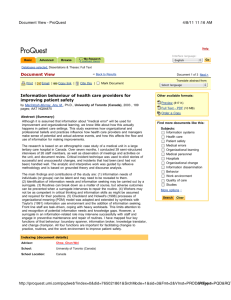
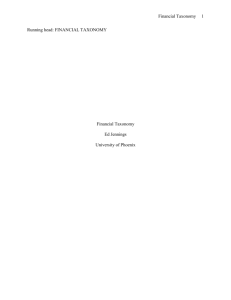
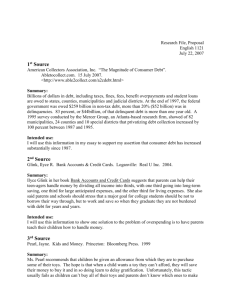
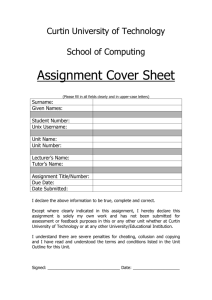


![Assignment coversheet (single) [ 48KB]](http://s3.studylib.net/store/data/008375796_1-47bef2c2c4eb4b7696d1fc3a80518558-300x300.png)
![Assignment coversheet (group) [ 126KB]](http://s3.studylib.net/store/data/008375797_1-0b6687da490940610c4ecb23456dda46-300x300.png)
